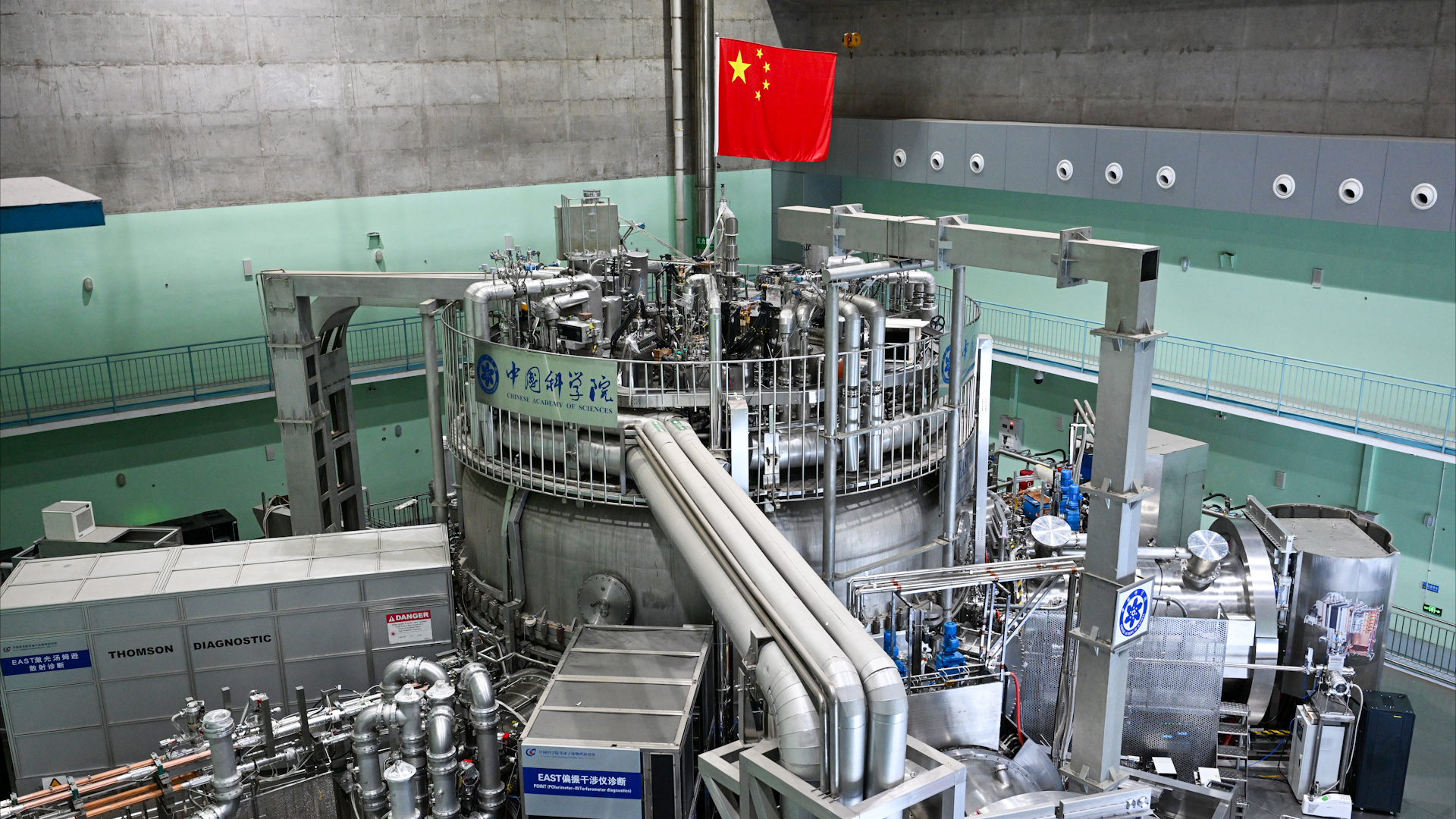
A SO-CALLED ‘ARTIFICIAL SUN’ CREATED BY CHINA HAS SET A NEW WORLD RECORD-
MARKING ANOTHER MILESTONE IN THE DEVELOPMENT OF LIMITLESS CLEAN ENERGY.
THIS WEEK, THE ‘EXPERIMENTAL ADVANCED SUPERCONDUCTING TOKAMAK’-
OR ‘EAST’ NUCLEAR FUSION REACTOR-
MAINTAINED A STEADY LOOP OF SUPER-HOT PLASMA FOR 1,066 SECONDS.
AN ACHIEVEMENT WHICH BROKE ITS OWN PREVIOUS RECORD OF 403 SECONDS.
EAST IS A MAGNETIC CONFINEMENT REACTOR DESIGNED TO KEEP THE PLASMA WITHIN IT CONTINUOUSLY BURNING FOR PROLONGED PERIODS-
AND THIS NEW RECORD IS A STEP TOWARDS MAINTAINING THAT PLASMA IN A STATE WHICH FUTURE REACTORS WILL NEED TO GENERATE ELECTRICITY.
NUCLEAR FUSION REACTORS MIMIC THE ENERGY GENERATION PROCESS OF THE SUN BY FUSING LIGHT ATOMS INTO HEAVIER ONES UNDER EXTREME HEAT AND PRESSURE.
UNLIKE THE SUN, EARTH’S REACTORS COMPENSATE FOR LOWER PRESSURE WITH TEMPERATURES MANY TIMES HOTTER.
FUSION TECHNOLOGY OFFERS THE POTENTIAL FOR A CONSTANT POWER SOURCE WITHOUT SIGNIFICANT GREENHOUSE GAS EMISSIONS OR LONG-LIVED NUCLEAR WASTE.
HOWEVER, IT HAS NOT YET REACHED THE STAGE OF GENERATING MORE ENERGY THAN IT CONSUMES.
THE EAST REACTOR’S LATEST ACHIEVEMENT COULD HELP BRING US CLOSER TO A FUTURE WHERE FUSION POWER PLANTS MIGHT PRODUCE CONTINUOUS ELECTRICITY, SUSTAINABLY.
WHILE EAST IS ONE OF SEVERAL FUSION REACTORS WORLDWIDE, NONE HAVE YET REACHED “IGNITION,”-
THE POINT WHERE FUSION REACTIONS SUSTAIN THEMSELVES.
IN 2022, THE U.S. NATIONAL IGNITION FACILITY IN CALIFORNIA BRIEFLY ACHIEVED THIS STATE WITH ONE OF THEIR REACTORS-
THOUGH IT STILL CONSUMED MORE ENERGY THAN IT PRODUCED.
THE DATA COLLECTED BY EAST WILL CONTRIBUTE TO THE DEVELOPMENT OF OTHER FUSION REACTORS, BOTH IN CHINA AND AROUND THE WORLD.
CHINA IS A PARTICIPANT IN THE INTERNATIONAL THERMONUCLEAR EXPERIMENTAL REACTOR PROGRAM-
A GLOBAL COLLABORATION ON FUSION TECHNOLOGY INVOLVING DOZENS OF COUNTRIES, INCLUDING THE U.S., U.K., JAPAN, SOUTH KOREA, AND RUSSIA.
THE REACTOR BEING DEVELOPED BY THIS GROUP- CURRENTLY UNDER CONSTRUCTION IN SOUTHERN FRANCE-
WILL FEATURE THE WORLD’S MOST POWERFUL MAGNET-
AND IS EXPECTED TO BEGIN OPERATIONS IN 2039 AT THE EARLIEST.
FOR MORE ABOUT DEVELOPMENTS IN THE ENERGY SECTOR BOTH DOMESTICALLY AND ABROAD, DOWNLOAD THE STRAIGHT ARROW NEWS APP AND SIGN UP FOR ALERTS FROM ME- JACK AYLMER.











